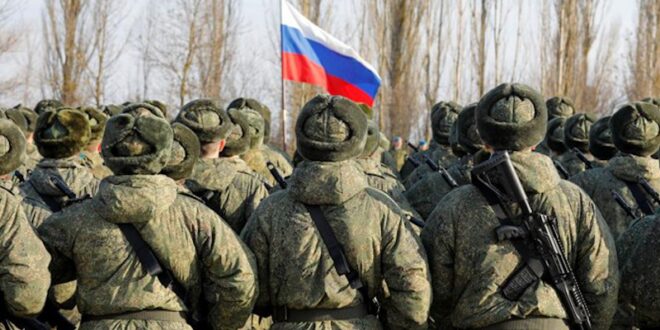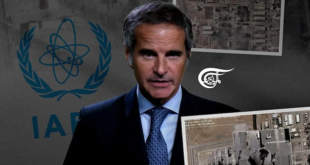As the Russian military build-up on the Ukrainian border continues, talks were held throughout the last week directly between US and Russia, followed by the Russia-NATO and Russia-OSCE dialogue. Now, Moscow says, it is waiting for answers on its various demands regarding the security architecture in Europe, before deciding its future course of action.
The key Russian demands for legally binding security guarantees include, most prominently, the non-expansion of NATO towards Ukraine or any other state, non-deployment of intermediate-range and shorter-range missiles in Europe, limitations on military activity in Eastern Europe, South Caucasus, and Central Asia. While no immediate breakthroughs were achieved, neither side has yet walked off the diplomatic path either, despite issuing tough statements about the sanctity of their respective red lines.
The proximate cause of the Russian military build-up on the Ukrainian border, which led to concerns about an impending military action, has been traced to Moscow’s unhappiness with the failure of Volodymyr Zelensky administration to implement the Minsk agreement (seen in Kiev as imposing a victor’s peace and favouring Russian position in Donbass). The fact that Ukraine continued to receive western military help, without being part of NATO, was also viewed negatively by Moscow.
The Russian military threat has brought the West to the negotiating table, but the agenda for talks put forth by Moscow goes much beyond the issue of NATO’s potential expansion to include Ukraine. It is essentially about the more fundamental subject of revising the existing European security system. The demands reveal that Russia considers its immediate post-Soviet periphery to be part of its sphere of influence, and having recovered after the collapse of its superpower status, is now willing to once again address its concerns in this geography.
The Russian discontent on all of the above mentioned issues is hardly news, given the opposition that has been voiced since the 1990s. In 1996, Foreign Minister Yevgeny Primakov listed a set of conditions under which NATO expansion could be made ‘palatable’. As Strobe Talbott, Deputy Secretary of State during the Clinton administration, writes in his memoirs, these included ‘a prohibition against stationing nuclear weaponry on the territory of new member-states; a requirement for “co-decision making” between Russia and NATO on any issue of European security, particularly where use of military force was involved; and codification of these and other restrictions on NATO and rights for Russia in a legally binding treaty.’
While the ‘no nuclear weapons on territory of new members’ was enshrined in the 1997 NATO-Russia Founding Act, the other demands were not seen as viable. President Bill Clinton told President Boris Yeltsin that while the US was willing to take Russian concerns into account, he would not be in a position to veto any country’s eligibility for NATO. Echoes of similar arguments from both sides can be heard again, but with much higher stakes today, as the threat of conflict in Europe looms large.
In subsequent years, several former Soviet states joined NATO even as Russian unhappiness about the situation grew. There was also considerable opposition within the US about this move, with notable dissenters ranging from Clinton’s Defence Secretary William Perry to George Kennan to a sizeable majority of the academic community in the US. The debate led initially to the formation of Partnership for Peace, open to post-Soviet states including Russia. But a combination of factors including active demands by Central and Eastern European states, Yeltsin’s ‘missteps’ as well as ‘victory by the pro-expansion Republican Party in the 1994 US congressional election’ tilted the balance in favour of those calling for rapid enlargement of NATO.
Essentially, Russian grievance over what Talbott describes as ‘having had to settle the NATO question essentially on our terms’ alienated the former superpower and created long-term tensions that continue to plague Europe. The chance to establish ‘lasting cooperation in Europe, rather than confrontation, between Russia and the West’ was scuttled. The 2008 Bucharest summit agreed for a future membership of Ukraine and Georgia, but the opposition of Germany and France meant no Membership Action Plan was offered. It muddied the waters and raised concerns in Moscow, which historian Mary Sarotte described as the ‘breaking point’ for Putin.
As a recent RAND report on Russian grand strategy concluded, Russia follows a wide variety of policy behaviour to maintain its influence in the post-Soviet Eurasia, ranging from ‘coercion’ to ‘laissez faire’. But it has not been willing to tolerate a ‘defection to the West,’ using force in Ukraine and Georgia to enforce its stated objectives. The red line of Russian opposition to Ukraine joining the western orbit was most starkly enforced in 2014, with the annexation of Crimea and invasion of eastern Ukraine.
Even though it is clear that the alliance has no intention to invite either post-Soviet country to join its ranks, what Russia is looking for is ‘never, ever’ commitment set in a legal guarantee. This stems from Moscow’s belief that assurances given without any firm backing would be overturned, as happened when the ‘spirit’ of talks between the US and erstwhile Soviet Union in 1990 broke down in subsequent years. Based on archival material, historians have, in recent years, argued that the Bush administration did give assurances to the Gorbachev administration about a ‘more cooperative Europe’ and also ‘implied’ non-expansion of NATO. However, the Soviet side did not demand or get any written guarantees, which weakened its overall position.
Ukraine question: Where it stands today
While this is not to justify Russian threats against Ukraine, and the Helsinki principle of every country being free to choose its own alliance remains an important one, the fact remains that Russia is willing to use force to achieve its ends in its neighbourhood. It is also clear that the US will not put boots on the ground to support Ukraine in case of an invasion; and Kiev is not being offered a NATO security umbrella. Any supply of weapons/advisers at this stage is unlikely to tip the balance in favour of Ukraine, against a much more sophisticated Russian force. The issue of Ukraine is not a core national interest for the US and not the one on which it is willing to go to war with Russia, especially at a time when the rise of China presents the central challenge to its position in the international order.
So, if the West cannot help Ukraine deter a Russian military intervention, it only seems logical to engage with Russia to save it from further destruction, while taking this crisis as an opportunity to build a more secure future for European security, a chance that was scuttled after the end of the Cold War. Different ideas have been proposed that could offer hope for some compromise, including a neutral Ukraine, a declaration that Ukraine will not be admitted to NATO or a moratorium, non-deployment of intermediate range ballistic missiles in Europe, etc. The issues raised by Russian demands, including on military activities, military bases, deployment of nuclear weapons, telephone hotlines, mechanisms to prevent incidents on and over the high seas, military exercises, can be agreed upon or negotiated if both sides are willing to make the necessary quid pro quos.
This issue does not exempt Russia from its own share of responsibility in ensuring regional stability. While its ongoing military activities have created a chance to negotiate a more stable future in Europe, and Russia’s role in it, this would require the former superpower to let the diplomats take charge and engage in a realistic give-and-take in the negotiating process. While Moscow might feel confident about being able to deal with western sanctions, an outbreak of war or other escalation that invites a backlash from the West would squander any diplomatic process and could lead to NATO reinforcement on its eastern borders. As a result, while Ukraine would remain out of NATO (which is already the case), Russia would lose out on any chance of compromises on other issues listed in its draft treaties while simultaneously weakening its own security position. The resulting situation would also lead to further Russian tilt towards China, but with the additional burden of the US leaning on its partners more strongly than ever before to reconsider their partnership with Moscow. In such a case, the results might not always be favourable towards Russia.
Russia and the US have the twin tasks of preventing an escalation in Ukraine as well as negotiating a new European security architecture that would be more stable than the one that has existed since the 1990s. This would entail the US and NATO being willing to reconsider the role of the military alliance in a changed world order; and address long-standing Russian security concerns. Moscow, too, will have to demonstrate a willingness to take a step back from the dangerous escalation path. The ongoing crisis, if turned into an opportunity by both the sides, could bring stability and security to Europe. The costs of failure remain unacceptably high to squander this diplomatic chance.
 Eurasia Press & News
Eurasia Press & News




